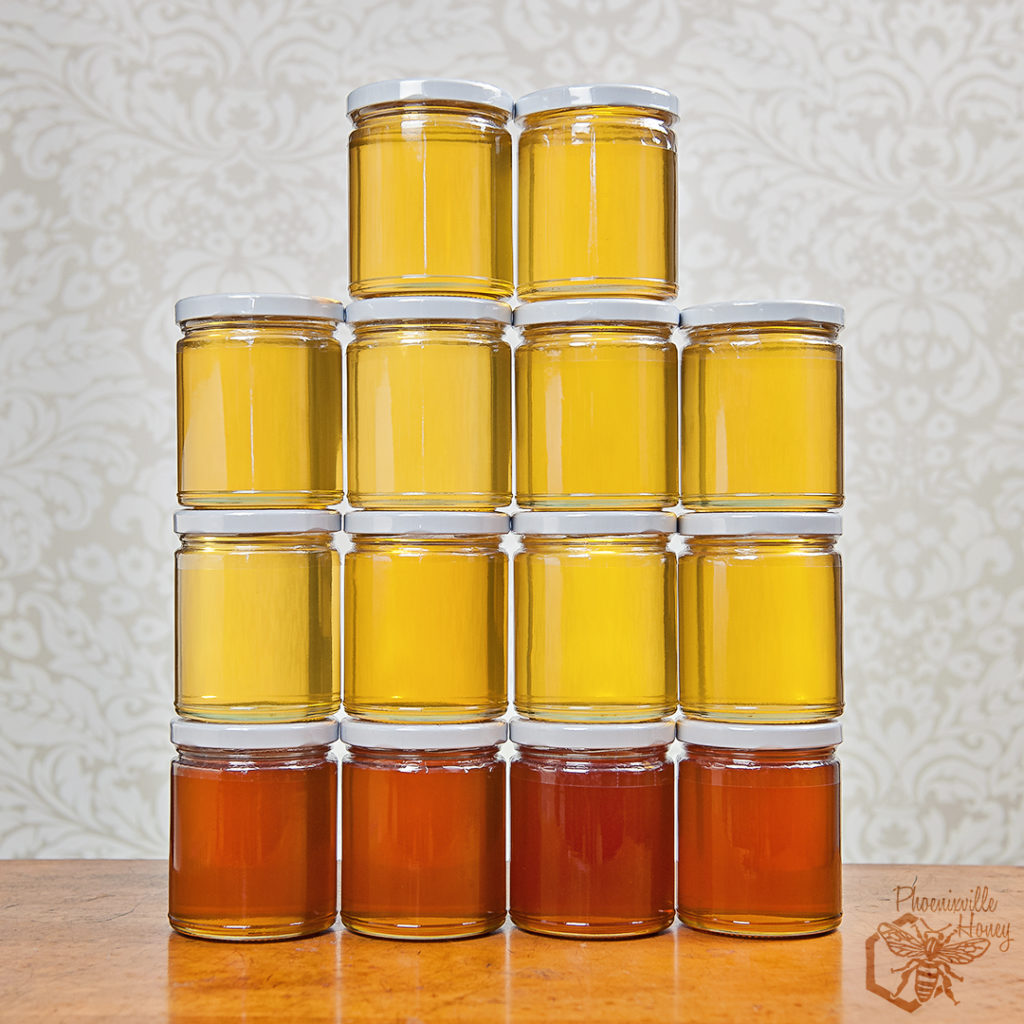
I love doing this in the beginning half of the year to see how the colors (and flavors) shift and change as time goes on. While there are very subtle color and flavor shifts in the early part of the season, it’s that dramatic jump from the pale yellow to a gorgeous mid-amber color that happens mid July, probably due to our last big tree bloom, the Sumac. Of course, there are a lot of other flower sources mixed in since our bees aren’t moved for pollination services, but one tree can hold thousands of flowers while one backyard garden with wildflowers might have a few hundred which is why trees make our biggest nectar producers. Don’t get me wrong, the flowers you plant to help bees absolutely help our native bees and honey bees as well and are 100% important! While an individual backyard of flowers might not be a major nectar producer, hundreds of backyards can combine to make an impact on honey production and supply pollen to raise the next generation of pollinators.
Now that we’re done processing through Batch N, we updated the honey guide (link here) which is now current through Batch N with photos. The batch letter on the lid of your jar will let you know when the honey was extracted, the location of the hives, and a few notes on the content and flavor. It’s also pretty fun to see the batches all lined up as the season goes on. I typically only bring 4-5 batches to a market, so if you have one you absolutely need to try, send me a message via the About Us page to let me know!
